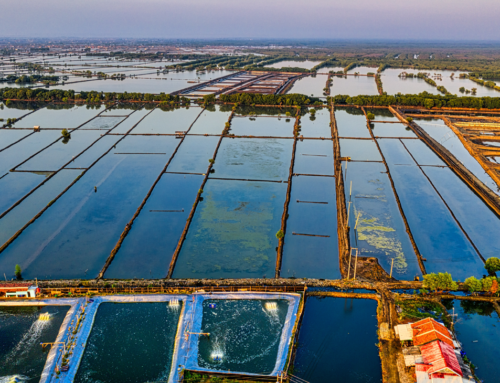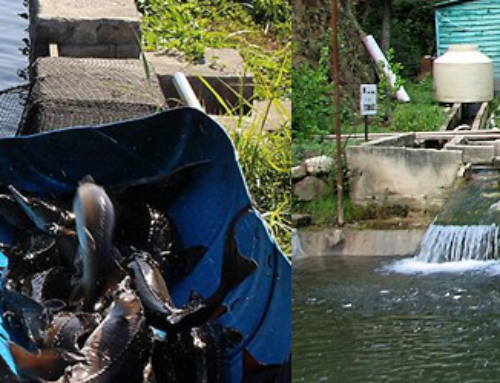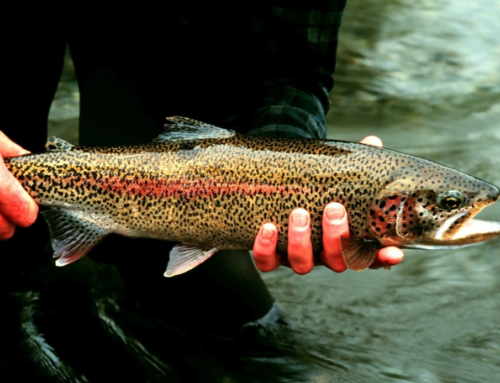Fish Feeding practices affect production efficiency and the nutritional value of prepared feeds. When selecting a feeding practice, it is important to consider the life stage of the fish, the water temperature and its effect on fish metabolism, the physical characteristics of the culture system, and the availability of natural food items. There is no “standard” method for feeding fish. However, there are some general principles that should be followed whenever possible.
Fish Feeding Schedules Based on Water Temperature and/or Fish Size
For several fish species that have been cultured for several decades, such as rainbow trout and channel catfish, various feeding schedules have been empirically developed that consider the effects of water temperature and fish size on the relative feed intake of the fish expressed as a percentage of body weight. Such schedules specify that prescribed amounts of feed be given at certain intervals. In general, the feeding frequency and feed quantity
(Expressed as a percent of body weight) are reduced as fish size increases and water temperature departs from optimum (Lovell, 2002). Feed manufacturers may provide such feeding schedules as general guides. They are also available in various publications (e.g., Lovell, 2002; assorted SRAC publications on the production of individual fish species).
Fish Feeding to Apparent Satiation
In certain culture systems, such as large ponds, it may be difficult to maintain an accurate estimate of fish biomass, in which case fish can be fed to “apparent satiation.” This feeding method can be rather subjective because it depends on the feeding activity of the fish and the experience of the feeder. Ideally, feed should be provided in small amounts over the course of 20 to 30 minutes or until feeding activity slows. This approach gives all fish ample opportunity to obtain some feed, especially after the most aggressive fish have consumed all they want.
Generally, it is better to underfeed than to feed too much because the uneaten feed will not only be wasted but also might degrade water quality.
And if water quality is not good (especially dissolved oxygen levels and total ammonia nitrogen concentrations) it might not be possible to feed fish all they will consume.
 Demand Feeders
Demand Feeders
Demand feeders can be used under certain circumstances. These allow fish to consume feed whenever they desire. A demand feeder has a feed storage container with a conical-shaped bottom and a disc located slightly below the conical bottom. A metal rod extends into the water. When fish touch the rod, feed is dropped into the water. The quantity dispensed can be adjusted. This type of feeder is commonly used in the production of rainbow trout in raceways. Demand feeders should be checked regularly to make sure they are working properly and to refill with feed.
Raceway with Demand Feeder.
The frequency with which feed is distributed is primarily determined by fish size and the characteristics of the culture system. Young fish grow faster and have better feed efficiency when fed several times a day. Older fish do not exhibit the same benefits from frequent feeding.
Feeding can be done by hand or with automatic feeders. These feeders come in many different designs such as belt conveyers or vibrating dispensers, but generally can be adjusted to provide specific amounts of feed at set intervals.
Feed Blower.
Adequate distribution of the feed is another important consideration. Feed is easy to distribute in relatively small culture systems such as raceways, cages, net pens or intensive flow-through or recirculating water systems. Distributing feed in large ponds is more difficult. Feed blowers mounted on or pulled behind trucks are commonly used to dispense feed in ponds. It is generally recommended that feed be distributed down one or more sides of the pond to make it accessible to as many fish as possible. If feeding must be limited to one levee, as on large facilities where numerous ponds must be fed daily, feed should be distributed from the upwind levee so it will disperse out into the pond.
Medicated Feeds
One of the most effective ways of treating fish for bacterial infections, especially in large culture systems, is to use medicated feed. Three commercial antibiotic products— oxytetracycline, sulfadimethoxine/ormetoprim and florfenicol—have been approved by the U.S. Food and Drug Administration (FDA) for use in the farming of fish destined for human consumption (http://www.fda.gov/AnimalVeterinary/DevelopmentApprovalProcess/Aquaculture/ucm 132954.htm).
The quantity of antibiotic fed must be controlled. Proper feeding rates and withdrawal times must be followed to reduce the deposition of antibiotics into fish tissues or the release of antibiotics into the rearing water that may be discharged into the aquatic environment.
Conclusions
Reliable estimates of nutrient requirements have been established for major cultured fish species. These estimates are rather similar among species whose natural feeding habits and environmental requirements are comparable. There is also information about the nutritional value and suitability of common feedstuffs used in fish feeds.





